NorthEast Radio Watch 12/8/2025: Cichon’s Back in Buffalo
In this week’s issue… Veteran newsman returns - Remembering NY's Leitner, RI's Jones - CT AM saved - Maine AM moves - "Indie" adds suburban signals
Text and photos by SCOTT FYBUSH
Let’s say you’ve somehow managed to exist for four and a half decades without ever enjoying the many pleasures of Austin, Texas. And let’s say that one warm autumn day, you finally get on a plane and touch down at Bergstrom Airport for the first time. Where do you go?
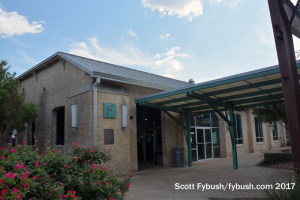

If you’re us, once you’ve picked up the rental car (a bit of a challenge on this particular week in early September 2017, not long after Hurricane Harvey whipped across Texas, leaving Austin mostly untouched but disrupting all sorts of travel), you point the GPS right to the nearest broadcast facility – in this case, iHeart Radio’s local studios. This being Austin, even corporate iHeart is in a funky location. The Penn Field office complex on South Congress Avenue in an up-and-coming part of South Austin is a redeveloped 1918 U.S. Army air base, with lots of historic brick and wood and a big water tower that still says “Clear Channel” on it.

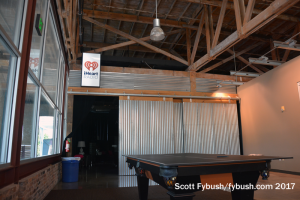
Once we’ve found “Building F,” we head inside to be greeted by the big “K V E T” sign that came from this cluster’s previous location downtown. Off one side of the lobby, there’s a pool table and a live performance studio with a corrugated metal door closing it off; inside, there’s a rather cooler vibe than most such studios we’ve seen lately.
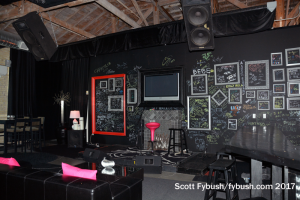
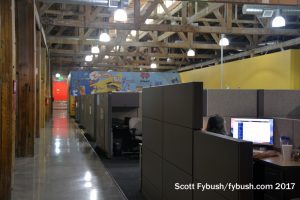
A long glass wall separates the lobby from the long studio/office area that adjoins it; we pass sales cubicles and a development area where some staffers from iHeart-owned RCS are doing software work (because this is Austin, after all) before getting to the studio core at the back of the facility.
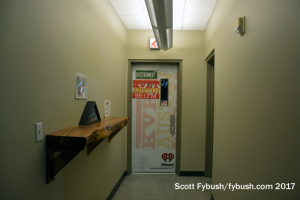
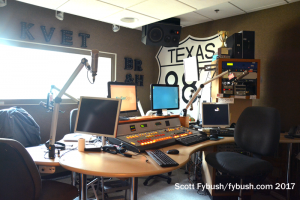
The music stations in the cluster are off to one side of the building, lined up in the typical iHeart pod arrangement that gives each station a main air studio and an adjacent production room/call screening area. KVET-FM (98.1) is one of two country stations in the group, paired with sister KASE-FM (100.7); another pod is home to top-40 KHFI (96.7 Kiss FM) and its rhythmic sister KPEZ (102.3 the Beat).
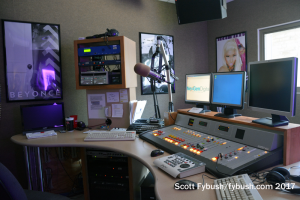
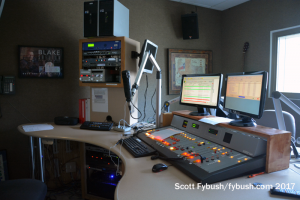
Across the hall at the center of the space, another pod of studios is home to sports KVET (1300) and the talk studio from which it shares sports programming with other iHeart sports signals around the state.
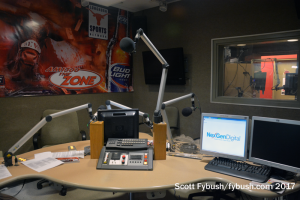


Across the hall on the other side of the “U” that makes up the back of the studio complex, there’s a spacious rack room (with one of the racks facing out into the hall so staffers can access equipment they need while the rest of the room stays locked) – and out back, in a yet-to-be-developed part of the Penn Field complex, is what has to be the biggest station garage I’ve ever seen, dwarfing the promo vehicles stored out there.
But this is all prelude to the nicest space in this studio facility, right in the center core between the individual station air studios and the engineering area. Veteran iHeart engineer Gil Garcia was charged with transforming a conference room into a multi-purpose studio for visiting talent, including iHeart’s Bobby Bones Show, which often originates from Austin.
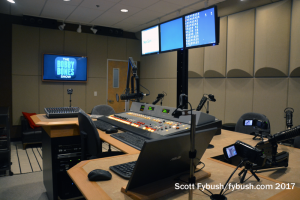
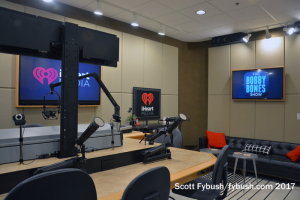
With a limited budget, Gil outdid himself here. The monitors above the console are motorized (Gil built it himself), so they can either sit directly over the console for solo use or can be elevated for better sightlines in a room full of talent. The acoustics are fantastic, especially for a room that wasn’t designed as a studio. And there’s a comfy couch and a small bar cart in one corner to make the room homey for visiting performers – of which there’s never any shortage in Austin.
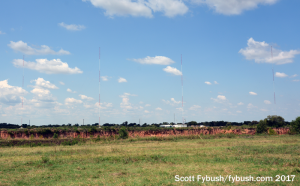
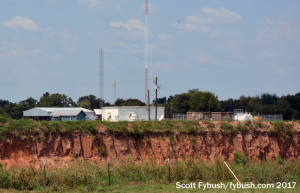
Even before we made it to iHeart’s south Austin studios, we’d already started checking off transmitter sites from our list. Austin’s not a big-signal AM market (the biggest AMs in the state went north to Fort Worth and Dallas or southwest to San Antonio), but the largest AM in town, Emmis’ news-talk KLBJ (590), is at least fairly respectable in its coverage, as you’d expect for a station formerly owned by a U.S. president’s family. Its four-tower array, a squashed parallelogram, sits next to a quarry just north of the airport – and if you look carefully to the west past the towers, you get a nice view of the downtown Austin skyline in the distance.
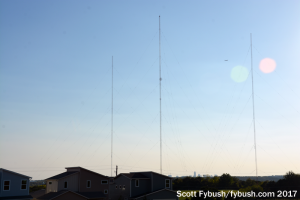
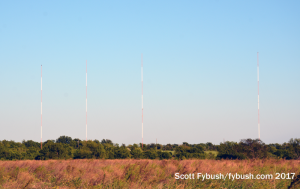
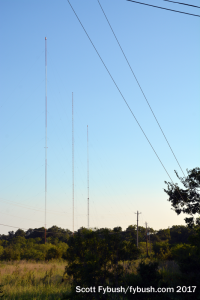
Most of Austin’s AMs all line up along the 290 tollway northeast of the city in Daffan and out toward Manor (out here, it rhymes with “Gaynor”), and we take some time late one afternoon to drive past a few of them in close proximity.
Entercom’s talker KJCE (1370 Rollingwood) is one of the closest to the city, just east of the US 183 corridor that’s undergoing massive reconstruction and growth.
Catholic KIXL (970 Del Valle) is just a mile or so to the east, with a four-tower dog-leg array.
And not far away off Old Manor Road, religious daytimer KFIT (1060 Lockhart) has its three towers down by Walnut Creek, just south and east of the 290/183 interchange.

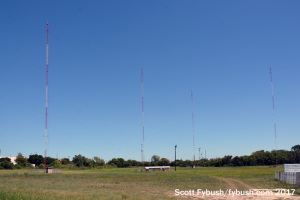
On the north side of 290, in a hilly area overlooking another quarry, we find the biggest DA in town. KTXZ (1560 West Lake Hills) is a 2500-watt full-time signal doing Tejano music; by day, it’s a four-tower parallelogram, and at night, it’s a six-tower array. If we’re counting right, only one tower is shared between the day and night arrays, making for nine towers off in the distance.
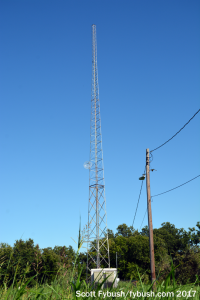
On the iHeart side of things, KVET’s site is the northernmost AM in town. The sports station’s 5 kW day/1 kW night signal comes from a four-tower array (two by day, three at night) on Metric Blvd. in a part of north Austin that’s under heavy development pressure, as is so much of this booming city.
And there’s one AM all by itself in a different part of town: just a mile or so east of downtown, right by the Colorado River off Cesar Chavez Street in an industrial area, we find the single tower of KTSN (1490), part of the “Sun Radio Network” that plays local Texas roots music. (It’s mostly heard on FM translators, as are so many of these AMs.)
This little AM signal has a long history – if you follow it far enough back, it was KUT, the original University of Texas radio station that dates back as far as 1926. The university sold the station early on, and it became commercial as KNOW, KMOW and KFON – but the KUT identity came back to life in the 1950s on FM, and in our next installment we’ll see what broadcasting at the U of T looks like these days.
Thanks to Gil Garcia for the tour!

As we announced a few weeks ago, the 2026 edition of the Tower Site Calendar will be the last.
We began publishing it 25 years ago, and the broadcast landscape is radically different now.
Radio World just ran an excellent article about us if you want to know more.
Once it’s gone, that’s it. We won’t be printing any more.
Thank you to everyone who saw our announcement and rushed to buy it. We appreciate you.
(There are some calendars from previous years if you want more of a tower photo fix — all under $5.)
But don’t wait to get this year’s Tower Site Calendar — buy it now!
We are selling the Broadcast Historian’s Calendar again this year, but we have that in an even smaller quantity — definitely don’t hesitate for that.
And visit the Fybush Media Store to check out our selection of books and videos, too!
And don’t miss a big batch of Austin IDs next Wednesday, over at our sister site, TopHour.com!
Next week: Austin, 2017, part II
In this week’s issue… Veteran newsman returns - Remembering NY's Leitner, RI's Jones - CT AM saved - Maine AM moves - "Indie" adds suburban signals
In this week’s issue… Scripps stations face takeover - Sinclair moves more affiliations - CT stations sold - Maine AM surrendered - Remembering WVBR's Shapiro, WABC's Morgan
In this week’s issue… CT TV legend succumbs to cancer - Remembering PA's Adams - FCC still stalled by shutdown - Pittsburgh morning host exits
In this week’s issue… FCC faces reopening challenges - Veteran Boston anchor retires - Morning shift in Toronto - NYC FMs expand reach